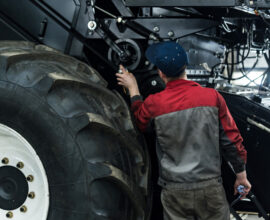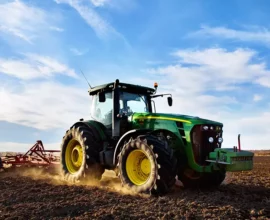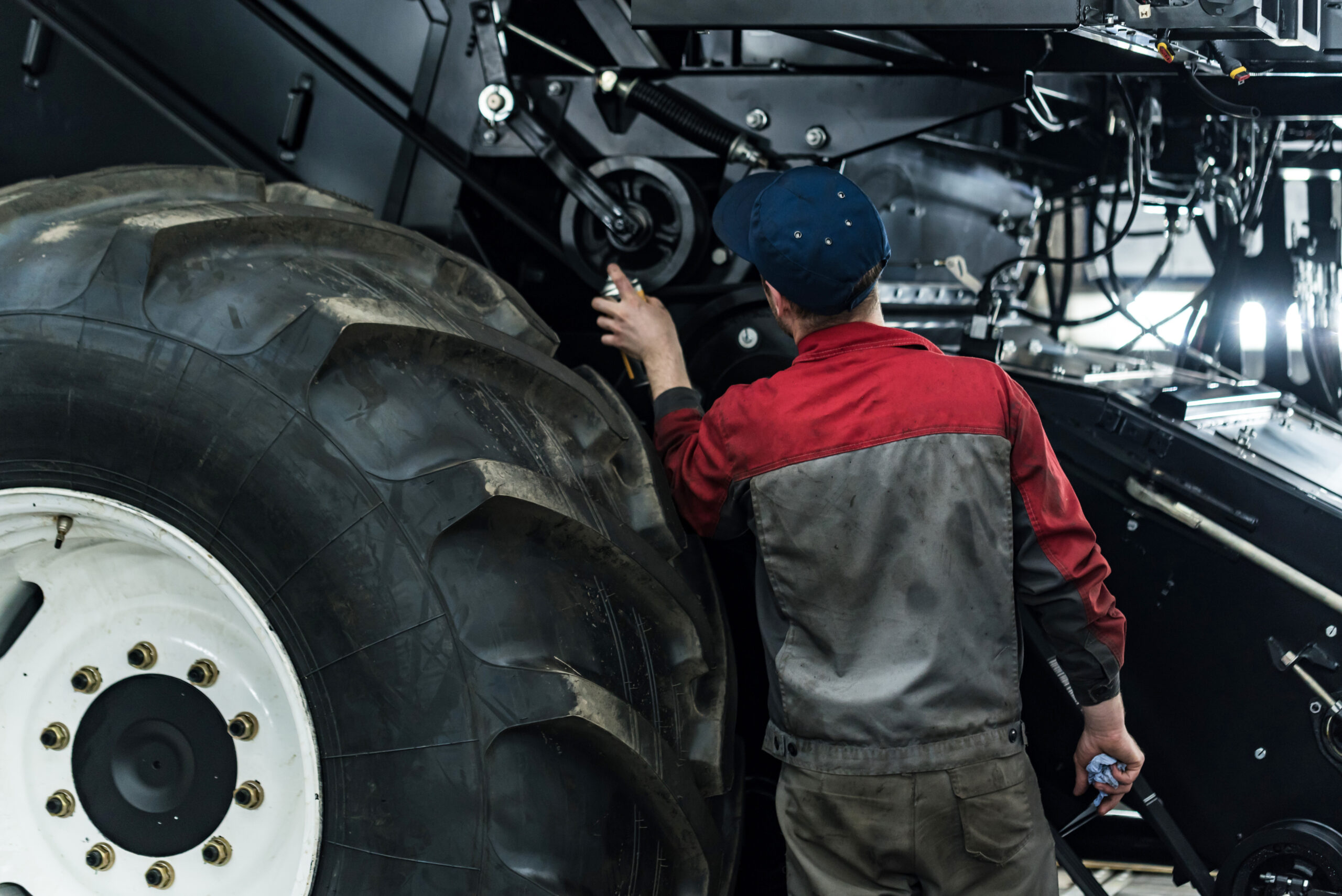WELL-OILED MACHINES
Mechanized vineyards prosper on the road to mainstream
By Joani Woelfel
Along the timeline of the ancient art of winemaking, the mechanization of vineyards is still in its infancy. If ever necessity was the mother of invention, the industrial vine and wine revolution defines it. Although the first grape harvesters were invented starting in the mid-1900s, the machinery was somewhat rudimentary and most of the time did more damage than good. Fast forward to a decade ago when technology and equipment finally started catching up in vineyard harvesting enough to meet the demands of winegrowers. Leaders in machine harvesters include Braud by New Holland and Oxbo, from the United States, Gregoire from Australia, and Pellenc of France.
Machines gently shake vines to release fruit. Technology provides onboard optical sorters that transport clean fruit to fermenters. Implements for shoot thinning, pruning and leaf removal emerged as the industry searches for better trellising systems, under-vine weed-eaters and other equipment to improve growing and harvesting operations.
“To make a change in the wine industry you have to start in the vineyard and you go to the winery,” said Keith Striegler, of E&J Gallo Winery. “Along the way we have to have buy-in from winemakers.” Striegler, a noted expert in vineyard mechanization, moderated a panel session at the 2018 Unified Wine & Grape Symposium in Sacramento with growers who recounted their experiences mechanizing their vineyards. UWGS is among the leading wine trade shows in the country. Labor — availability, cost and the level of experience required, was the greatest factor driving the need to mechanize. The culture and standards of the wine industry that set demanding requirements for taste and quality challenged conversions. The panel of growers who transformed their vineyards in the past decade say mechanization has arrived, changing the face of vineyards from the way they are established, to management and operations, to the way they look.
Growers said the quality of machine-harvested grapes improved with smaller, more dense clusters, increased skin to juice ratio and very little change in chemistry with slight variations in Brix and tannins. Better machinery produces cleaner picks with fewer leaves, and together with improved operations, growers are better able to control yield and forecast production. Throughout the transition, growers said their experience with controlled tests and trials show few could distinguish any difference in taste, and testing illustrates improved quality. Mechanization has been a game-changer for picking flexibility, night harvests and early morning delivery. All of which contributes to higher yields and translates to better margins, they said.
Labor shortages drove St. James Winery, located 100 miles southwest of St. Louis, to make the change, Executive Winemaker Andrew Meggitt said. St. James, which packaged 250,000 cases last year, conducted side-by-side taste trials of hand and mechanized grape harvests starting in 2004.
“We couldn’t see any discernible difference. In the early days I wasn’t a proponent but time heals all wounds,” Meggitt said. As they moved through the transition and technology and operation improved, “our fruit got better, our wines got better, and quality improved. The fruit is coming in a lot cleaner.” Picking flexibility is paramount for St. James. “When it’s damp and it’s 100 degrees … and we’re fighting disease … being able to get into the canopy and open it up at the right times, shoot thin, leaf remove, cluster thin, shoot position, for us it makes a big, big difference,” Meggitt said. Clay Brock’s Turn Key Wine Brands, which harvested 6,000 tons of grapes and packaged 300,000 cases last year at its French Camp Vineyards alone, said improved production and quality are the fruits of mechanization for growers. French Camp has 1,500 planted acres and supplies fruit to more than 35 wineries. “It gives us a whole lot of flexibility in timing,” Brock said.
“Our focus is supplying wine to the open market, said Mike Draxton, of Draxton Wines & Draxton Wine Storage, which produces more than 10,000 tons of grapes and has six crush facilities along the North and Central Coasts. D&D Vineyards has 245 acres of mechanized production for Cabernet Sauvignon in the Alexander Valley. Their first mechanized harvest was 2013. “Considering a lack of labor for farming especially at harvest time, mechanization gives me more confidence that fruit can be harvested at optimal times without sacrificing quality,” Draxton said. Mechanization produces cleaner fruit and a nice, even canopy, he added. “What’s going on nowadays at harvest time is that you have better opportunities to pick fruit when it’s ready to be picked.” Draxton said mechanized and conventional grape yields are kept separate through the post-harvest tasting so their clients choose from among both. “So far when we do these lots there’s been no distinction made on the quality of conventional fruit vs. mechanized harvest,” he said.
Chateau St. Michelle Wine Estates in Washington conducted a detailed study of mechanized vs. conventional harvesting for luxury wine consumption on 15 acres, said Jennifer Haun, enologist for the winery. Findings included increased harvest volume with nominal changes in chemistry. “Both of the treatments are really close in quality,” Haun said. “Nothing really stood out to where we would say this wouldn’t make the cut.” Haun said they are expanding the trial. Conversions are a learning curve since mechanized vineyards take time to perfect, and labor savings could be a tradeoff since mechanized harvesting requires a greater technical skillset, she said.
With labor challenges and equipment investment costs upwards of $350,000 for a harvester alone, growers acknowledged making the change is challenging for smaller operations but cooperative operations exist. As for whether mechanization takes the winegrowing industry by storm, Striegler said it’s virtually inevitable: “At some point it will become a question of whether you can farm or not.”
Joani Woelfel is president and CEO of Far West Equipment Dealers Association. FWEDA is a member of the California Association of Winegrape Growers.










